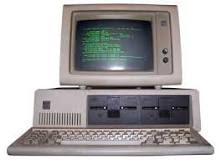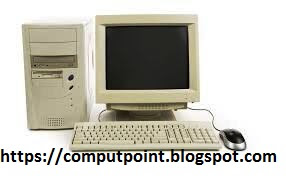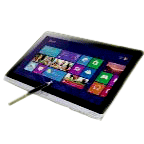Third Generation Computer (1965-1971):
The period of third generation was during in the year 1965 - 1971. The third generation of computer was developed the concept of integrated circuits called as IC's in transistors.
- A single IC has many transistors, resistors and capacitors and along with associative circuitry or chip of silicon.
- The IC was invented by Jack kilby. IC's are sometime called chips because of the way they are made.
- In this generation made computers smaller in size, reliable and efficient.
- The features of third generation was remote processing, time sharing, multi-programming operating system were used.
- In this generation computers offered more money and faster processing as well as development of first telecommunications stations on the earth could transmit and receive data from the satellites, enabling worldwide communications between computer systems.
- High level languages like FORTRAN-ii TO IV, COBOL, PASCAL PL/1, BASIC, ALGA-68 were used this generations.

The main features of third generations are:
- IC's were used.
- More reliable when in comparison to previous two generations.
- Smaller in size.
- Its produced a less heat.
- More faster then previous generations.
- Its so lesser maintenance.
- Cost is very high.
- Air conditioner is needed.
- Its consumed lesser power.
- Its supported high level languages.
Some computers of this generations were:
1. IBM 360 series.
2. Honeywell-6000 series.
3. PDP (Personal Data Processor)
4. IBM-370/168.
5. TDC-316.
Fourth Generation Computer (1971-1980):
The period of fourth generation was during in the year 1971-1980. The technology of fourth generation computers was used VLSI (very large scale integrated circuit).
- A creation of tiny computers that designed on a chip gave way for the world's first micro-processor. It holds on a single chip in the entire control unit and arithmetic & Logical unit of a computer. The technique was called as VLSI.
- VLSI circuits having about 5000 transistors and other circuit elements and associated circuits on a single chip and made it possible as to have micro-computer of fourth generation.
- Fourth generation computers becomes more powerful, compact, reliable and affordable. As a result, it gave rise to personal computer (PC) revolution is still going strong.
- The efforts to pack even more transistors on one chip have led to such developments as Intel's Pentium microprocessors. Although the high-level languages are still used extensively, All the high-level languages C, C++, DEBASE etc are appeared fourth generation.
- In this generation time sharing, real time, networks and distributed operating system were used.

The main features of Fourth generations are:
1. VLSI Advance technology used.
2. Its very cheap.
3. Its portable and reliable.
4. Use of PC's.
5. This is smaller in size.
6. Pipeline processing.
7. No need of AC.
8.A new concept of internet like LAN (local Area network), WAN (Wide Area Network) was introduced.
9. A Great developments in the fields of networks.
Some computers of this generations were:
1. DEC 10
2. STAR 1000
3. PDP 11
4. CRAY-1 (Super computer)

Fifth Generation Computer (1980-Till)
The period of fifth generation was during in the year 1980 - till date. In this fifth generation, the VLSI technology become ULSI (Ultra Large Scale Integrated) technology .
- It resulting in the production of micro processor chips having ten million electronic components.
- In this generation is based on parallel processing hardware AI (Artificial Intelligence) software.
- AI is an emerging branch in computer science, which interprets means and method of making computers think like human begins.
- All the high-level languages like C and C++, Java, .Net etc. are used in this generation.

Artificial Intelligence includes:
1.Robotics
2.Neural networks
3.Game Playing
4.Development of expert systems to make decisions in real life situations.
5.Natural language understanding and generation.
The main features of fifth generation are:
1. VLSI technology
2. Development of true artificial intelligence
3. Development of Natural language processing
4. Advancement in Parallel Processing
5. Advancement in Superconductor technology
6. More user friendly interfaces with multimedia features
7. Availability of very powerful and compact computers at cheaper rates
Some computer types of this generation are:
1. Desktop 4. Ultra Book
2. Laptop 5. Chrome Book
3. Notebook

No comments:
Post a Comment